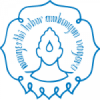Keywords: Acute respiratory tract infections, adult, epidemiology, molecular detection, respiratory virus infection
Suradi *)
LPPM UNS, Penelitian, DP2M, Hibah Kompetitif (Publikasi Internasional), 2009
To determine the etiological role and epidemiological profile of common respiratory viruses in adults with acute respiratory tract infections (ARTIs), an 8-months study was conducted in Surakarta, Indonesia, from April 2009 to November 2009. Nose and throat swab samples from 195 ARTI patients were analyzed by PCR methods for common respiratory viruses, including influenza viruses (IFVs) A, B, and C, parainfluenza viruses (PIVs) 1-4, enteroviruses (EVs), human rhinoviruses (HRVs), respiratory syncytial virus (RSV), human metapneumovirus (HMPV), human coronaviruses (HCoVs) OC43, 229E, NL63, and HKU1, and adenoviruses (ADVs). Viral pathogens were detected in 34.6% of patient samples, and 1.6% of the patients tested positive for more than one virus. IFVs (19.3%) were the dominant agents detected, followed by HRVs (6.5%), PIVs (4.3%), EVs (3.2%), and HCoVs (1.1%). ADVs, RSV and HMPV were also detected (<1%). The viral detection rates differed significantly between infections of the lower and upper respiratory tracts in the sample population: PIVs, the second most commonly detected viral agents in lower acute respiratory tract infections (LRTIs), were more prevalent than in upper acute respiratory tract infections, indicating that the pathogenic role of PIVs in LRTIs should be investigated. Currently, this study is the largest-scale investigation of respiratory virus infections in Indonesia with multiple agent detection, providing baseline data for further studies of respiratory virus infections in adults with ARTIs.

